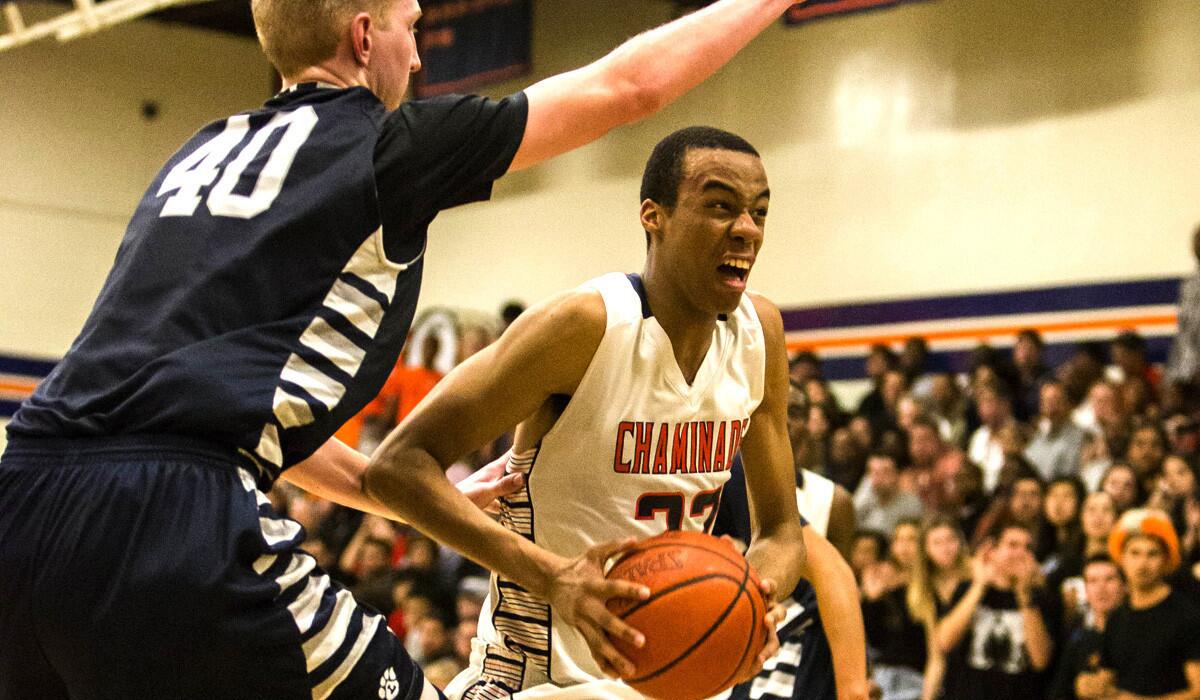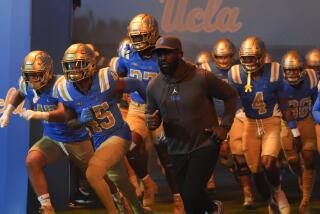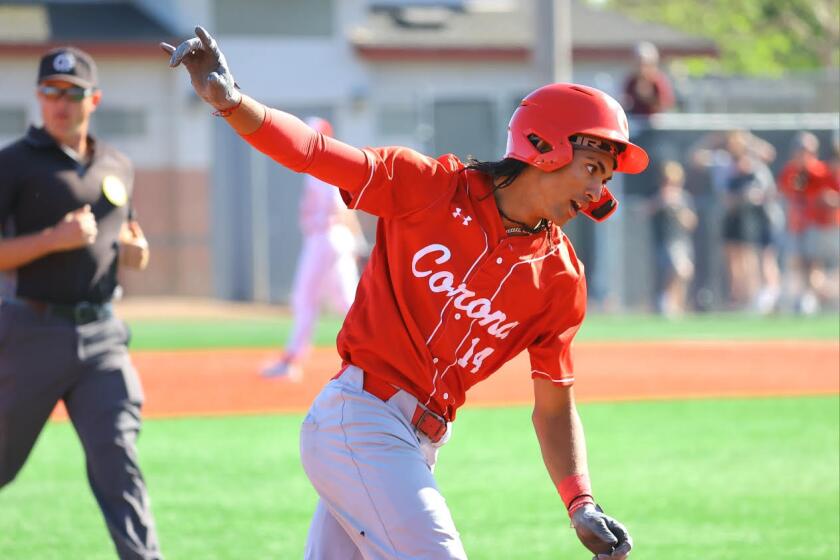Unfortunately, changing schools is the norm for prep athletes

- Share via
It has been called the “new normal.”
Transfers are changing the culture of high school sports. Lax rules combined with little fear of consequences are allowing star athletes to move around as if they were free agents.
It was so simple 20 years ago when coaches were full-time teachers who rarely were fired because of their win-loss record; parents sent their sons and daughters to the neighborhood public school or a private school where the family had roots; and players dreamed about competing alongside their best friends, showing loyalty and commitment to their community.
Today, we have fewer coaches who are teachers, and the ones who are face pressure to win or be replaced; parents don’t care where a school is located as long as the coach has the right connections and the school offers an academic program that will help attract a college scholarship offer; and the best friends are from the latest club team the athlete has hooked on with.
Terry Barnum, head of athletics at Studio City Harvard-Westlake High, was a standout running back at Mission Hills Alemany in the early 1990s, then received a scholarship to USC. Now he has a son at Harvard-Westlake.
“The competition for college is way, way more fierce than 22 years ago when I graduated from high school,” Barnum said. “In the summer of 1990, I went to the Terry Donahue football camp. There were maybe 100 kids. We just got back from Oregon’s camp and there were 500 from 30 different states, all of them coached up, talented, striving for coaches’ attention.
“The college landscape has changed and the high school landscape has changed to keep up.”
No one keeps statistics on the number of students changing schools for athletic reasons, but there is plenty of anecdotal evidence to suggest that it’s happening — a lot — and there is a scramble to respond.
It’s almost comedic talking to coaches between seasons. With an eye on the future, many of them unabashedly pine for a prime transfer or two.
What’s happening requires new thinking and fresh ideas to save some of the redeeming values that high school sports can offer.
Two years ago, the California Interscholastic Federation, which governs high school sports locally, passed legislation that reduced the penalty for switching schools. An athlete can now transfer once without changing residence and lose only about a month of eligibility instead of a year.
Growing legal costs and a spike in parents seeking to obtain hardship waivers caused member schools to throw up the white flag of surrender.
In effect, the decision gave a green light to families willing to shop around for the best sports situation. For just about any reason, small or big, an athlete can transfer. Whether the family changes residences doesn’t much matter anymore. The fear is gone. There are minimal consequences if a transfer is executed properly.
For example, this fall quarterbacks who last season played at Westlake could be the new starters at Moorpark, Santa Ynez, Chatsworth and Sherman Oaks Notre Dame. Had they stayed, all would have been understudies to Malik Henry, one of the top junior quarterbacks in the nation.
In July, two basketball players from state championship teams — 6-foot-10 Trevor Stanback of West Hills Chaminade and guard Tyler Dorsey of Bellflower St. John Bosco — announced they were leaving for Pasadena Maranatha.
Public and private schools alike are competing for and welcoming big-time athletes who bring exposure, fill seats and make alumni excited and willing to donate for fundraising campaigns.
High school sports have become similar to club ball, where players are recruited and move from team to team. The disparity between the haves and have nots is widening. Top programs no longer have rebuilding years, they simply reload with transfers.
CIF sections have responded by forming what could be called transfer divisions, grouping top teams together for the playoffs regardless of enrollment and letting them fight it out.
The Southern Section’s Open Division for the basketball playoffs this year provided something of a sneak peek at what a transfer division might look like: based purely on performance, 16 teams were plucked out of their enrollment-based divisions and told to go at it.
It was great basketball and fun to watch, but no one was fooled by how to get invited to the party. You needed a transfer or two. One team had nine.
Call it an Open Division or a Transfer Division; it could be the most viable solution to deal with the ambitious sports powerhouses.
Some schools will try to be successful without relying on the transfer model.
Anaheim Servite took in the fewest number of transfers, 15, of any Trinity League school from 2012 to October 2013.
“Our philosophy is we live in this world but we don’t have to be of this world,” principal Michael Brennan said. “Just because everyone is doing it doesn’t mean that Servite has to do it. We’re going to go with the kids who want to be at Servite and understand what it means to be a brother.”
There are costs when athletes move from school to school. What happens to the idea of loyalty? What happens to the idea of learning to deal with adversity when players and parents run away from competition? What happens to a school’s academic reputation when transfer after transfer is let in?
This is the “new normal”?
If so, the original mission of high school sports is headed for extinction.
More to Read
Get our high school sports newsletter
Prep Rally is devoted to the SoCal high school sports experience, bringing you scores, stories and a behind-the-scenes look at what makes prep sports so popular.
You may occasionally receive promotional content from the Los Angeles Times.







